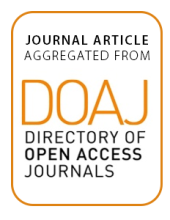Land Library Search
Through our robust search engine, you can search for any item of the over 73,000 highly curated resources in the Land Library.
If you would like to find an overview of what is possible, feel free to peruse the Search Guide.
/ library resources
Showing items 1 through 9 of 122.This summary assesses the gaps in the provision;understanding and implementation of laws/articles and their impact on women and VGs with respect to land use rights and provides a strategy to overcome these legal constraints that affect women and VGs land rights security..This resource was publish
This strategy assesses the gaps in the provision;understanding and implementation of laws/articles and their impact on women and vulnerable groups (VGs) with respect to land use rights and provides a strategy to overcome these legal constraints that affect women and VGs land rights security..This
This case study assesses how a new agricultural loan product is helping smallholder farmers to access loans by using their land use right as a guarantee..This resource was published in the frame of the Land Investment for Transformation (LIFT) Programme.
This study examines the reasons why landholders choose to formally or informally transact land use rights and provides recommendations on how to increase the number of households formally registering transactions..This resource was published in the frame of the Land Investment for Transformation
This study focuses on how traditional rural landscape and proximity to a Natura 2000 Site of Community
Importance (SCI) might influence consumers’ choice of an agritourism farm for a weekend stay. Data were
The Red Palm Weevil (RPW), after its accidental introduction in Italy in 2005, determined a progressive
disruption of Canary palms mostly in the central and southern regions. As it is difficult to undertake the
There is a rapidly growing body of literature on the theory about the ecosystem service concept and the practical assessment of
ecosystem services in different contexts ranging from natural to urban environments. Yet, where does the concept reach its limits?
Background: To address the structural food deficit and top down extension system that persisted for decades, the government of Ethiopia has introduced a new extension system, called Participatory Demonstration and Training Extension Systems, which serves more than 80% of the total population
Background: In South Africa, the idea that the township economy needs to be ‘revitalised’ has begun to gain significant political traction.


